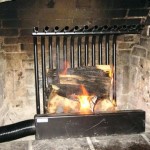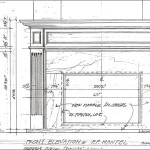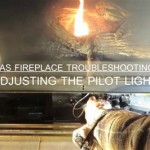Zero Clearance Wood Burning Fireplace With Blower: A Comprehensive Guide
A zero-clearance fireplace is a highly efficient and safe way to heat a home. It is designed to be installed close to combustible materials, such as wood framing, without the need for extra fire-resistant protection. This makes them ideal for renovations and new construction projects, as they streamline the installation process and save valuable space. A zero-clearance fireplace with a blower enhances the heating capabilities by circulating warm air throughout the room and beyond.
Zero-clearance fireplaces come in various designs and sizes to complement any home's aesthetic. They are often accompanied by features like glass doors, which enhance the visual appeal while providing safety and efficiency. The blowers are typically integrated into the fireplace, effortlessly distributing heat into adjoining rooms for a comfortable and cozy ambiance. This makes them a desirable choice for homeowners seeking a balance between style and functionality.
Understanding Zero Clearance Fireplaces
Zero-clearance fireplaces are constructed using a robust and fire-resistant material, usually steel or concrete. They are designed to withstand high temperatures and prevent heat from escaping beyond the designated areas. The air-tight nature of these fireplaces allows them to operate at higher temperatures, resulting in an efficient and powerful heat source.
These fireplaces have several advantages over traditional masonry fireplaces, including:
- Improved Efficiency: Higher temperatures and the air-tight construction contribute to improved heat transfer, ensuring more of the heat generated is directed into the room.
- Enhanced Safety: The fire-resistant materials and construction eliminate concerns about heat damage to surrounding structures. The installation guidelines provide detailed instructions for safe operation.
- Versatile Installation: They can be installed against combustible materials like wood framing, making them suitable for various locations without requiring costly and time-consuming fireproofing.
- Cost-Effective Option: With a simpler installation, zero-clearance fireplaces can be more affordable than traditional masonry fireplaces.
Understanding Blowers
A blower is a critical component that enhances the heating capabilities of a fireplace. The blower circulates warm air from the fireplace into other parts of the room or even adjacent rooms, distributing heat more efficiently. This allows for greater comfort and reduces reliance on other heating systems. Blowers operate using a motor to move air, typically powered by electricity. To ensure proper operation, it is essential to install the blower according to manufacturer instructions and ensure adequate ventilation for the motor.
Choosing a zero-clearance fireplace with a blower offers numerous advantages:
- Greater Heat Distribution: By circulating warm air, the blower ensures more efficient heat distribution throughout the house. This makes the fireplace a valuable heating source on cold winter days.
- Reduced Heating Costs: The efficient heat distribution can reduce the need for other heating systems, leading to potential savings on energy bills.
- Improved Comfort: The warm air circulation creates a more comfortable and inviting atmosphere, especially in larger rooms.
- Increased Versatility: Blowers extend the effectiveness of the fireplace, allowing for heating beyond the immediate fireplace area. This can be particularly advantageous for open floor plans where heat distribution is essential.
Installation Considerations
Installing a zero-clearance fireplace with a blower requires careful planning and adherence to local building codes. It is essential to consult with a qualified professional for installation. Proper ventilation and a strong chimney are crucial for safe and efficient operation.
Here are some essential factors to consider:
- Chimney Size: Ensure that the chimney is the correct size for the fireplace and blower. A too-small chimney can lead to smoke and carbon monoxide buildup.
- Venting Requirements: Follow the manufacturer's guidelines for ventilation, which can include fresh air intake and exhaust venting.
- Clearance Distances: Maintain the recommended clearance distances between the fireplace and combustible materials. These distances are typically specified in the manufacturer's instructions.
- Electrical Connections: The blower requires an electrical outlet. Ensure the outlet is properly wired and can handle the blower's power requirements.
By following these instructions and consulting with a professional, you can ensure a smooth and safe installation of your zero-clearance fireplace with a blower.

Zero Clearance Wood Fireplace Ventis He350 Best Fireplaces Rockford Chimney

Rsf Pearl Woodburning Zero Clearance Fireplace Fergus

Hearthstone Wfp 75 Montgomery 8411 Zero Clearance Wood Burning Fireplace Mazzeo S Stoves Fireplaces

Osburn Everest Ii Wood Burning Zero Clearance Fireplace Rockford Chimney

Rsf Focus Sbr Woodburning Zero Clearance Fireplace Fergus

Ventis He275cf High Efficiency Wood Fireplace Vb00017 Us

Wood Burning Fireplaces Fireplace Installations

High Efficiency Zero Clearance Wood Fireplaces Vonderhaar

Ventis Zero Clearance Wood Burning Fireplace Rockford Chimney

Ventis He250 Zero Clearance Wood Fireplace Chimney
Related Posts








